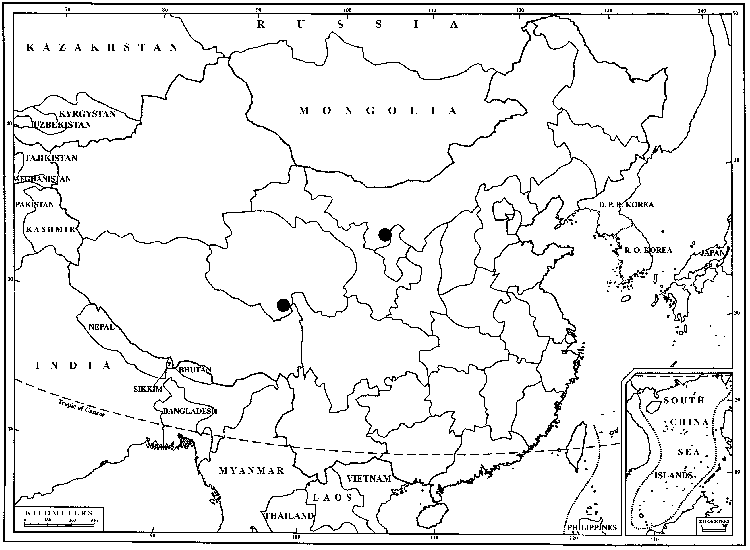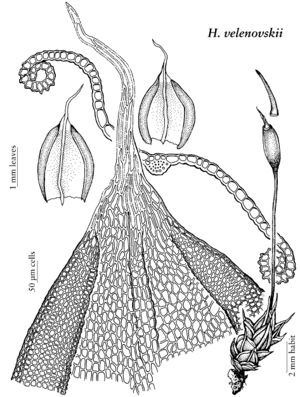Hilpertia velenovskyi
Phylologia 65: 429. 1989,.
Stems branching irregularly; rhizoids rare; leaves broadly toothed at or near the base of the awn; basal cells ca. 16–18 µm wide, 2–3:1. Specialized asexual reproduction by brood bodies of (1–)3–4 cells, mostly 30–50 µm. Perichaetial leaves to 1.7 mm. Seta 0.35–0.40 cm, twisted counterclockwise distally, clockwise proximally. Theca operculum 0.4–1 mm, cells twisted 1/2 times counterclockwise; peristome teeth 300–700 µm, densely branching-spiculose. Calyptra ca. 2.8 mm, smooth. Spores indistinctly papillose, light brown.
Phenology: Capsules mature summer.
Habitat: Calcareous silt and shrub steppe
Distribution

B.C., N.W.T., Nunavut, c Europe, Asia (China).
Discussion
In the flora area, Hilpertia velenovskyi is a rare but distinctive species known only from Northwest Territories, base of a hill on the north bank of the South Nahanni River, 60°33’30”N, 125°23’W, from British Columbia, E side of Fraser R. at Big Bar, 51°15’N, 122°W, T. McIntosh 7688, May 13, 1984 (UBC), and from Nunavut, Ellesmere Island, Tanquary Fiord marine forland, 1.5 mi. SW of base camp, 81°23’N, 76°59’W, G. S. Mogensen 90-134, July 19, 1990 (C). The spiraled leaf margin of slightly enlarged, highly photosynthetic cells is similar to that of Pseudocrossidium replicatum, but the broad leaf shape and costal anatomy place H. velenovskii in the Pottioideae. I agree with the appraisal of B. C. Tan and J. Zhao (1997) that H. scotteri is a synonym. As with those in Stegonia latifolia, the cells of the leaf apex are rhomboid to fusiform and epapillose.
Selected References
None.
